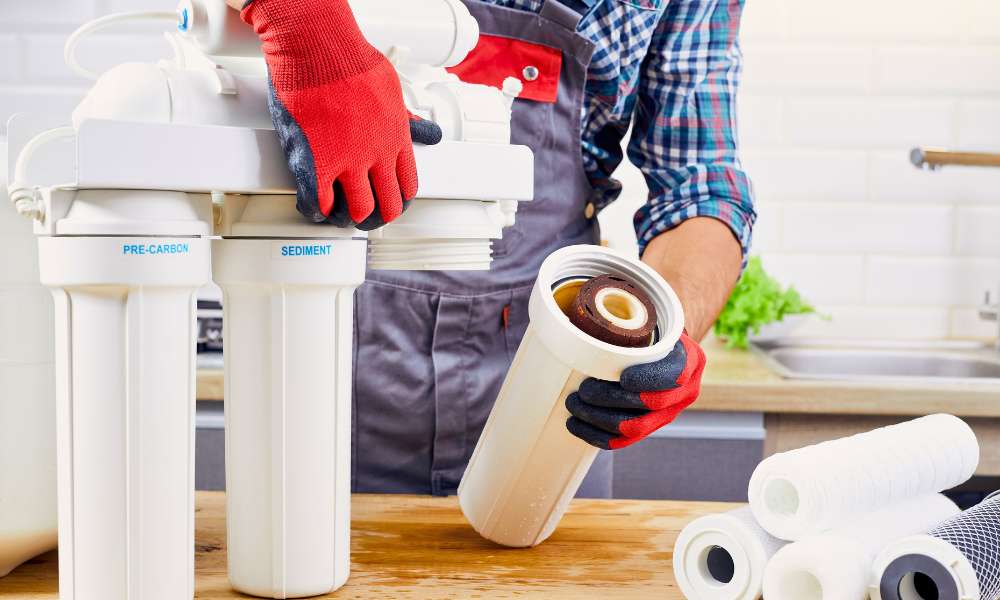Changing your water filter regularly is crucial for maintaining clean and safe drinking water in your home. It’s easy to overlook, but knowing how often to change your water filter in the house can make a significant difference in water quality and your health. Regular replacement ensures the removal of harmful contaminants, keeps your water tasting fresh, and prolongs the lifespan of your filtration system. Whether it’s an activated carbon filter, reverse osmosis system, or UV filter. Understanding the optimal replacement schedule helps you enjoy the benefits of pure water and peace of mind.
Why Change The Water Filter Frequently?
Changing the water filter frequently is essential because it removes contaminants and impurities from your drinking water, which can accumulate over time. If you don’t replace the filter regularly, it can become clogged and less effective, leading to poor water quality and potential health risks. Regularly changing the water filter also helps maintain the efficiency of your water filtration system. Prolonging its lifespan and ensuring that you and your family always have access to clean, safe, and great-tasting water.
Here Are Some Water Filter Lists That You Can Change Easily And Their Lifespan
Activated Carbon Filters
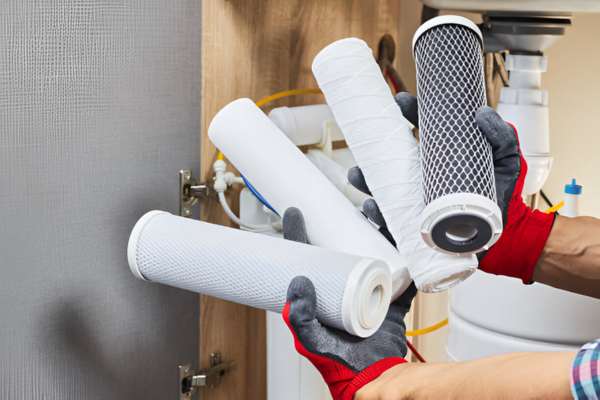
Activated carbon filters are one of the most popular types of water filters used in households. These filters are known for their ability to remove a wide range of contaminants, including chlorine, volatile organic compounds (VOCs), and bad taste and odors from water. The activated carbon works by adsorbing impurities onto its surface. Effectively trapping them and preventing them from entering your drinking water. These filters are typically used in various water filtration systems, including pitcher filters, faucet-mounted filters, and under-sink systems. The main benefit of activated carbon filters is their ability to significantly improve the taste and smell of your water, making it more enjoyable to drink. They are also relatively inexpensive and easy to replace, making them a convenient option for maintaining clean water in your home.
Lifespan Of Activated Carbon Filters
The lifespan of an activated carbon filter can vary depending on the type and usage, but generally, these filters need to be replaced every 2 to 6 months. For instance, pitcher filters usually last about 2 months or after filtering 40 gallons of water. While faucet-mounted filters can last up to 3 months or 100 gallons. Under-sink activated carbon filters may have a longer lifespan of around 6 months or up to 500 gallons of water. The filter’s effectiveness diminishes over time as it becomes saturated with contaminants, so it’s crucial to follow the manufacturer’s recommendations for replacement.
Signs It’s Time To Change
Several signs indicate it’s time to change your activated carbon filter. Firstly, you might notice a decline in water taste and odor, as the filter becomes less effective at removing contaminants. If your water starts to taste or smell off, it’s a good indication that the purifier needs replacing. Secondly, reduced water flow is a common sign; a clogged purifier will restrict water flow, making it slower than usual. Another sign is if you’ve reached the filter’s lifespan as recommended by the manufacturer. Typically marked by months or gallons of water filtered. Additionally, if your water appears cloudy or has visible particles, it’s time for a new purifier. Regular maintenance and observation will help ensure your water remains clean and safe.
How To Change An Activated Carbon
Changing an activated carbon filter is a straightforward process that you can easily do yourself. First, make sure to turn off the water supply to avoid any leaks. If you’re using a pitcher filter, simply remove the old purifier and insert the new one according to the manufacturer’s instructions. For faucet-mounted filters, detach the purifier housing, take out the used filter, and replace it with a new one, ensuring it fits securely. Under-sink systems might require a bit more effort. You’ll need to unscrew the purifier housing, remove the old purifier, and install the new one. Make sure all connections are tight to prevent leaks. After replacing the purifier, flush the system by running water through it for a few minutes to remove any loose carbon particles. This ensures your new filter is ready to provide clean, fresh water.
Reverse Osmosis Filters

Reverse osmosis (RO) filters are highly effective at removing a wide range of contaminants from water. Including dissolved salts, lead, fluoride, nitrates, and other impurities. These systems work by forcing water through a semipermeable membrane that blocks contaminants while allowing clean water to pass through. An RO system typically consists of several stages of filtration, including a sediment purifier, a carbon filter, and the RO membrane. Sometimes additional carbon filters or UV sterilizers for extra purification. The result is water that is exceptionally pure and safe to drink. Reverse osmosis systems are commonly used in households where water quality is a significant concern. Providing peace of mind that your drinking water is free from harmful substances.
Lifespan Of Reverse Osmosis
The lifespan of reverse osmosis filters varies based on the component and usage but on average. The pre-filters (sediment and carbon filters) need to be replaced every 6 to 12 months. The RO membrane itself typically lasts between 2 to 3 years, depending on the water quality and system usage. Post-filters, such as additional carbon filters, usually require replacement every 12 months. Following the manufacturer’s guidelines for each component is essential to maintain the system’s efficiency and water quality. Regularly replacing these filters ensures the RO system continues to remove contaminants effectively, providing consistently pure drinking water. Neglecting to replace the filters can lead to reduced performance, higher contaminant levels in your water, and potential damage to the system.
Signs It’s Time To Change Your Reverse Osmosis
Several signs can indicate it’s time to change your reverse osmosis filter. A noticeable drop in water pressure or flow rate is a common sign, suggesting that the filters are clogged and need replacing. Another indicator is a change in the taste or odor of your water. It starts to taste or smell off, which means the filters are no longer effectively removing contaminants. Additionally, if you notice any cloudiness or particulates in your water, it’s a clear sign that the filters are failing. Regular maintenance schedules recommended by the manufacturer are also a good guideline. If you’ve reached the suggested time frame or gallon usage, it’s time for a change. Keeping an eye on these signs ensures your RO system continues to provide high-quality, clean water.
How To Change A Reverse Osmosis Filter
Changing a reverse osmosis filter involves several steps but is manageable with a bit of patience. First, turn off the water supply and open the RO system’s faucet to relieve pressure. Begin with the pre-filters by unscrewing the purifier housings, removing the old filters, and inserting the new ones. Be sure to check for the correct orientation and secure them properly. For the RO membrane, locate the membrane housing, remove the old membrane with pliers if necessary, and insert the new one, ensuring it’s seated correctly. Reassemble the housing and move on to any post-filters, following the same process. Once all filters are replaced, turn the water supply back on and flush the system as per the manufacturer’s instructions, usually for several minutes. To ensure everything is working correctly and clean water is flowing.
Ceramic Filters

Ceramic filters are a reliable and effective option for water filtration, especially in areas with limited access to clean water. These filters use a ceramic cartridge to remove bacteria, sediment, and other impurities from water. The tiny pores in the ceramic material trap contaminants while allowing clean water to pass through. Ceramic filters are often used in gravity-fed systems and countertop units, making them convenient for home use. One of the key benefits of ceramic filters is their ability to be cleaned and reused multiple times, which extends their lifespan and reduces the frequency of replacement. They are particularly effective at removing harmful bacteria, making them a great choice for ensuring safe drinking water.
Lifespan Of Ceramic Filters
The lifespan of ceramic filters depends on the level of contamination in the water and how often the filter is cleaned. Generally, a ceramic purifier can last anywhere from 6 months to several years. Regular cleaning of the ceramic cartridge helps maintain its effectiveness and prolong its lifespan. For instance, if the purifier is used in a gravity-fed system with relatively clean water, it might last up to a year before needing replacement. In areas with higher contamination levels, more frequent cleaning and earlier replacement might be necessary. It’s essential to follow the manufacturer’s recommendations and regularly inspect the filter for any signs of damage or reduced flow rate to ensure optimal performance.
Signs It’s Time To Change Your Ceramic
Several signs indicate it’s time to change your ceramic filter. A significant decrease in water flow is a primary sign, as it suggests the pores in the ceramic material are clogged with contaminants. If you notice that cleaning the purifier no longer restores its flow rate, it’s time for a replacement. Another sign is a change in water quality; if the filtered water starts to taste or smell different, it indicates the purifier is no longer effectively removing impurities. Visible cracks or damage to the ceramic cartridge are also clear indicators that the purifier needs to be replaced. Regular inspection and maintenance will help you catch these signs early and ensure your filter continues to provide safe, clean drinking water.
How To Change A Ceramic Filter
Changing a ceramic filter is a simple process. Begin by turning off the water supply and removing the purifier unit from its housing. Carefully take out the old ceramic cartridge and inspect it for any cracks or excessive clogging. If the purifier is visibly damaged or cleaning does not restore its performance, it’s time for a replacement. Insert the new ceramic cartridge into the housing, making sure it is securely seated and properly aligned. Reattach the filter unit to the water supply and turn the water back on. It’s advisable to flush the new purifier with water for a few minutes before using it to ensure any loose particles are removed. Regular maintenance and timely replacement of the ceramic cartridge will ensure your water remains clean and safe to drink.
Faucet-Mounted Water Filters
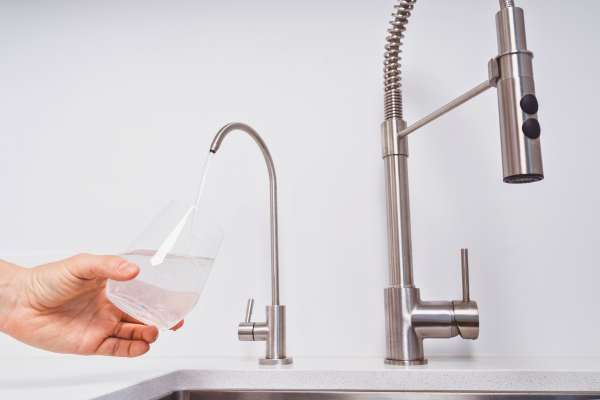
Faucet-mounted water filters are a convenient and cost-effective solution for improving the quality of your tap water. These filters attach directly to your faucet and use various filtration media, such as activated carbon or ceramic, to remove contaminants like chlorine, lead, and sediment. The main advantage of faucet-mounted filters is their ease of installation and use. They can be quickly attached to most standard faucets without the need for professional help. They also provide filtered water on demand, making them ideal for drinking, cooking, and other household uses. With a simple switch, you can toggle between filtered and unfiltered water, offering flexibility and convenience for your daily needs.
Lifespan Of Faucet-Mounted Water Filters
The lifespan of faucet-mounted water filters varies based on the type of filter and water usage, but they typically last between 2 to 3 months or up to 100 gallons of water. Some models come with a filter replacement indicator that alerts you when it’s time to change the purifier, making maintenance even easier. Regularly checking the manufacturer’s guidelines will help you stay on top of replacements, ensuring your water remains clean and safe. The lifespan can also be affected by the water quality in your area; heavily contaminated water might require more frequent purifier changes. Keeping track of your water usage and monitoring the filter’s performance will help you determine the optimal replacement schedule, ensuring consistent water quality.
Signs It’s Time To Change Your Faucet-Mounted Water Filter
Several signs indicate it’s time to change your faucet-mounted water filter. One of the most obvious signs is a decrease in water flow, as a clogged purifier will restrict water passage. If you notice the water coming out slower than usual, it’s likely time for a new purifier. Another sign is a change in the taste or odor of your water. If your water starts tasting or smelling off, the filter is no longer effectively removing contaminants. Additionally, if your purifier has a built-in indicator, it will signal when a replacement is needed. Regular visual checks can also reveal any visible buildup or discoloration on the filter, indicating it’s time for a change.
How To Change A Faucet-Mounted Water Filter
Changing a faucet-mounted water filter is a quick and easy process. First, turn off the water supply to the faucet and unscrew the purifier unit from the faucet. Remove the old purifier cartridge from the housing and dispose of it properly. Insert the new purifier cartridge into the housing, ensuring it is securely in place. Reattach the purifier unit to the faucet, making sure all connections are tight to prevent leaks. Turn the water supply back on and run water through the filter for a few minutes to flush out any loose particles and activate the new purifier. Regularly replacing your faucet-mounted water filter will help maintain clean, great-tasting water for all your household needs.
UV Filters
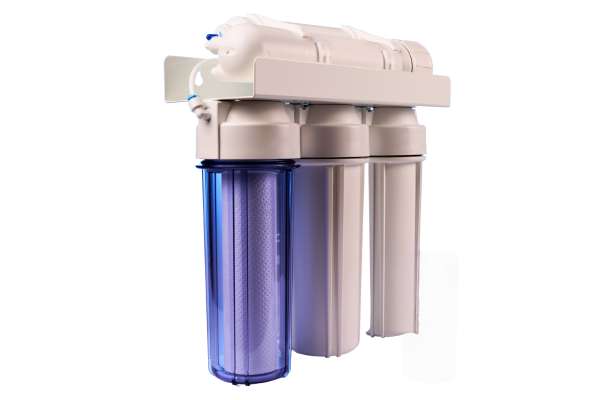
UV filters use ultraviolet light to disinfect water by destroying bacteria, viruses, and other harmful microorganisms. This method is highly effective at purifying water without adding any chemicals, making it a popular choice for households concerned about waterborne pathogens. UV filters are often used in conjunction with other filtration systems, such as activated carbon or reverse osmosis, to provide comprehensive water treatment. The primary benefit of UV filters is their ability to eliminate up to 99.99% of harmful microorganisms, ensuring your water is safe to drink. They are particularly useful in areas where water sources are known to be contaminated with bacteria or viruses.
Lifespan Of UV filters
The lifespan of a UV filter’s bulb typically ranges from 9 to 12 months, depending on the model and usage. The effectiveness of the UV light diminishes over time, so it’s crucial to replace the bulb regularly to maintain optimal performance. Most manufacturers recommend changing the UV bulb annually to ensure it continues to effectively disinfect the water. Some systems come with a built-in indicator that notifies you when it’s time to replace the bulb. Regular maintenance, including cleaning the quartz sleeve that surrounds the bulb, will also help prolong the filter’s lifespan and ensure it continues to provide safe, pathogen-free water.
Signs It’s Time To Change Your Uv Filter
Several signs indicate it’s time to change your UV filter bulb. The most obvious sign is the manufacturer’s recommended replacement interval, usually around 12 months. If your UV system has an indicator light, it will alert you when the bulb is nearing the end of its life. Another sign is a decrease in water quality, such as an increase in microbial content, which may not be easily noticeable but can be confirmed through water testing. If you notice any physical damage or cloudiness on the quartz sleeve, it’s also time to replace the bulb. Regular checks and timely replacements will ensure your UV filter continues to protect your water supply effectively.
How To Change A UV Filter
Changing a UV filter bulb is a straightforward process. First, turn off the water supply and unplug the UV unit. Carefully remove the protective cover and gently extract the old bulb from the unit. Handle the new bulb with clean gloves or a cloth to avoid any contamination or fingerprints, as oils from your skin can reduce its effectiveness. Insert the new bulb into the unit, ensuring it is properly seated and secure. Reassemble the protective cover and plug the unit back in. Turn the water supply back on and allow the system to run for a few minutes to ensure everything is functioning correctly. Regularly changing the UV bulb will keep your water safe and free from harmful microorganisms.
Inline Filters
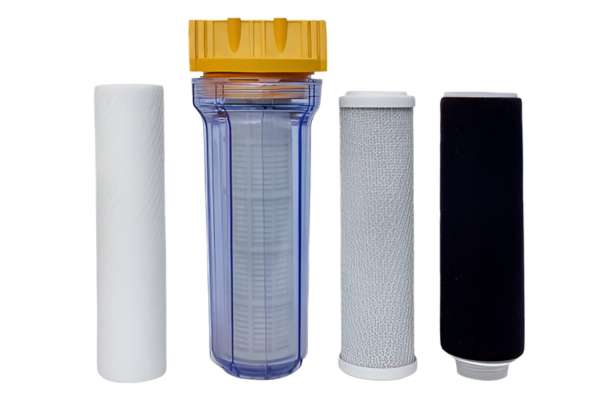
Inline filters are installed directly onto your water line, providing continuous filtration for your entire home or specific appliances, such as refrigerators or ice makers. These filters are highly effective at removing contaminants like chlorine, sediment, and other impurities that can affect the taste and quality of your water. The main advantage of inline filters is their convenience and low maintenance, as they do not require separate housing or frequent replacements. They ensure that all the water flowing through the connected appliances is clean and safe, making them a popular choice for improving household water quality.
Lifespan Of Inline Filters
The lifespan of inline filters varies based on the type of filter and water usage, but they generally last between 6 months to a year. Some high-capacity models can last even longer, up to 2 years, depending on the water quality and amount of water filtered. Manufacturers usually provide specific guidelines on when to replace the purifier, often measured in gallons of water filtered or months of usage. Regularly replacing the inline purifier ensures it continues to remove contaminants, providing consistently clean water effectively. Following the recommended replacement schedule is crucial to maintain the filter’s performance and prevent any reduction in water quality.
Signs It’s Time To Change Your Inline Filter
Several signs indicate it’s time to change your inline filter. A noticeable water flow or pressure decline is a common sign that the purifier is clogged and needs replacing. If you detect a change in the taste or smell of your water, it suggests the purifier is no longer effectively removing impurities. Additionally, if your purifier has been in use for the recommended period or has filtered the maximum number of gallons specified by the manufacturer, it’s time for a replacement. Regular visual inspections can also reveal any buildup or discoloration, indicating the filter is due for a change. Keeping an eye on these signs helps ensure your water remains clean and safe.
How To Change An Inline Filter
Changing an inline filter is a simple process. Start by turning off the water supply to the filter and relieving any pressure by opening a faucet. Locate the filter and use a wrench to disconnect the fittings on both ends. Remove the old purifier and dispose of it properly. Install the new filter by connecting it to the water line, ensuring the arrow on the purifier points in the direction of water flow. Tighten the fittings securely but avoid overtightening. Turn the water supply back on and check for any leaks. Run water through the purifier for a few minutes to flush out any loose particles and ensure it’s working correctly. Regularly changing your inline filter will help maintain optimal water quality.
Whole House Water Filters
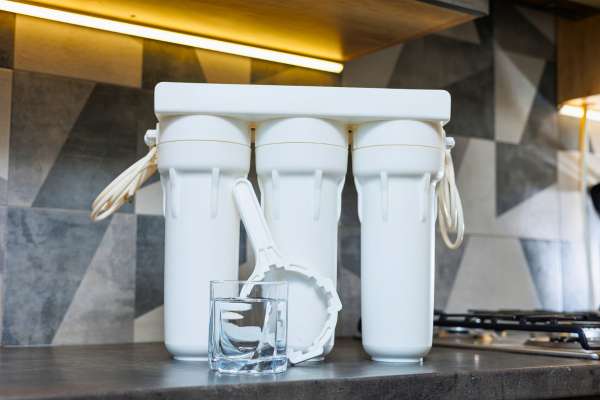
Whole house water filters provide comprehensive filtration for all the water entering your home, ensuring clean and safe water for drinking, cooking, bathing, and other household uses. These systems are typically installed at the main water line and use multiple stages of filtration to remove a wide range of contaminants, including sediment, chlorine, heavy metals, and other impurities. The main benefit of whole-house water filters is the convenience of having filtered water throughout your entire home. Protecting your plumbing and appliances from buildup and extending their lifespan. They are an excellent choice for families looking to improve their overall water quality.
Lifespan Of Whole House Water Filters
The lifespan of whole-house water filters depends on the type of purifier and the level of contamination in your water. Generally, sediment pre-filters need to be replaced every 3 to 6 months, while carbon filters and other main filters typically last 6 to 12 months. Some systems use more durable filters that can last up to 2 years. Following the manufacturer’s recommendations for each purifier stage is crucial to maintain the system’s effectiveness. Regularly replacing the filters ensures that your whole house water filter continues to provide clean, safe water throughout your home, protecting your family and your plumbing system.
Signs It’s Time To Change Your Whole House Water Filter
Several signs can indicate it’s time to change your whole house water filter. A noticeable drop in water pressure throughout your home suggests the filters are clogged and need replacing. If you start to detect unusual tastes or odors in your water, it means the filters are no longer effectively removing contaminants. Another sign is if you’ve reached the manufacturer’s recommended replacement interval, either in months or gallons filtered. Regularly inspecting the filters for visible buildup or discoloration can also help you determine when they need to be changed. Keeping an eye on these signs ensures your whole house water filter continues to provide optimal performance.
How To Change A Whole House Water Filter
Changing a whole house water filter involves a few steps but is manageable with basic tools. First, turn off the water supply to your home and relieve any pressure by opening a faucet. Locate the purifier housing and use a purifier wrench to unscrew it. Remove the old filter and dispose of it properly. Clean the inside of the filter housing with a mild detergent and rinse thoroughly. Insert the new filter into the housing, ensuring it is properly seated.
Apply a small amount of lubricant to the O-ring if necessary and screw the housing back onto the unit, tightening it securely. Turn the water supply back on and check for leaks. Run water through the system for a few minutes to flush out any loose particles and ensure everything is working correctly. Regularly changing your whole house water filter will help maintain clean and safe water for your entire home.
Pitcher Water Filters
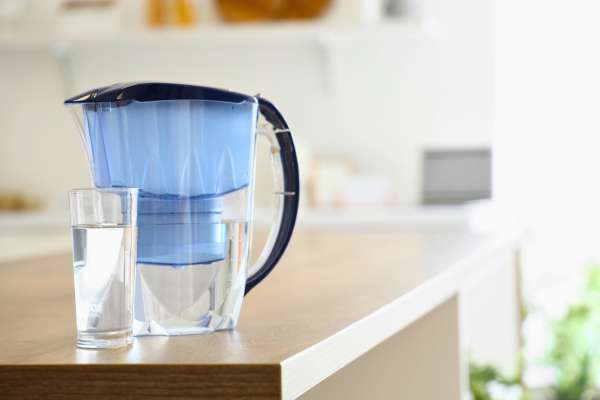
Pitcher water filters are a convenient and affordable way to improve the quality of your drinking water. These filters are designed to fit inside a water pitcher and use activated carbon to remove contaminants like chlorine, lead, and unpleasant tastes and odors. The main advantage of pitcher water filters is their ease of use; simply fill the pitcher with tap water, and the filter will do the rest. They are an excellent choice for households looking for a simple and portable water filtration solution. Pitcher filters are particularly popular for their affordability and the ability to provide clean, great-tasting water without any installation required.
Lifespan Of Pitcher Water Filters
The lifespan of pitcher water filters varies depending on the brand and model, but they generally need to be replaced every 2 to 3 months or after filtering about 40 gallons of water. Some advanced models come with an indicator that lets you know when it’s time to change the filter. Following the manufacturer’s recommendations for replacement is essential to ensure the filter continues to effectively remove contaminants. Regularly replacing the pitcher filter ensures that your water remains free from unwanted tastes, odors, and potentially harmful substances, providing consistently clean and fresh drinking water for you and your family.
Signs It’s Time To Change Your Pitcher Water Filter
There are several signs that it’s time to change your pitcher water filter. The most noticeable sign is a change in the taste or odor of your water; if it starts to taste or smell off, it means the filter is no longer effectively removing contaminants. Another sign is a decrease in water flow through the purifier, indicating it is clogged and needs replacing. If your purifier has an indicator light or time-based reminder, it will alert you when it’s time for a change. Additionally, if you’ve been using the filter for the manufacturer’s recommended lifespan, it’s time to replace it to ensure continued water quality.
How To Change A Pitcher Water Filter
Changing a pitcher water filter is a simple and quick process. Start by removing the old filter from the pitcher and disposing of it properly. Before inserting the new filter, it’s recommended to soak it in cold water for a few minutes to ensure optimal performance. After soaking, rinse the new purifier under running water for a few seconds to remove any loose carbon particles. Insert the new purifier into the pitcher, ensuring it fits securely in place. Fill the pitcher with tap water and allow the water to pass through the purifier. It’s advisable to discard the first batch of filtered water as it may contain initial carbon dust. Once the new filter is in place and the pitcher is filled, you’re ready to enjoy clean, fresh-tasting water. Regularly changing your pitcher water filter will help maintain the quality and safety of your drinking water.
Countertop Water Filters

Countertop water filters are an excellent option for those who want high-quality water filtration without the need for complicated installation. These filters sit on your kitchen counter and connect directly to your faucet, providing a steady supply of filtered water. Countertop filters typically use multiple stages of filtration, including activated carbon, ceramic, and sometimes UV light. To remove a wide range of contaminants such as chlorine, sediment, heavy metals, and microorganisms. The main benefit of countertop water filters is their ease of use and the ability to provide large quantities of filtered water quickly. Making them ideal for cooking, drinking, and other household needs.
Lifespan Of Countertop Water Filters
The lifespan of countertop water filters varies depending on the type of filter and the quality of the water being filtered. Generally, these filters need to be replaced every 6 to 12 months, or after filtering around 500 to 1,000 gallons of water. Some models come with a purifier change indicator that alerts you when it’s time for a replacement. Following the manufacturer’s recommendations for purifier replacement is crucial to ensure the system continues to effectively remove contaminants. Regular maintenance and timely purifier changes will help keep your countertop water filter working efficiently. Providing clean and safe water for your household.
Signs It’s Time To Change Your Countertop Water Filter
Several signs indicate it’s time to change your countertop water filter. A noticeable decrease in water flow or pressure suggests the filter is clogged and needs replacing. If you detect a change in the taste or odor of your water, it means the purifier is no longer effectively removing impurities. This indicates it’s time for a replacement, especially if you’ve used the purifier for the recommended duration or filtered the maximum number of gallons specified by the manufacturer. Regular visual inspections can also reveal any buildup or discoloration on the purifier, indicating it’s time to change it. Keeping an eye on these signs ensures your countertop water filter continues to provide optimal performance.
How To Change A Countertop Water Filter
Changing a countertop water filter is a straightforward process. First, turn off the water supply to the filter and relieve any pressure by opening the faucet. Locate the filter housing and unscrew it to access the old purifier. Remove the old purifier and dispose of it properly. Clean the inside of the purifier housing with a mild detergent and rinse thoroughly. Insert the new purifier into the housing, ensuring it is properly seated and aligned. Reassemble the housing and tighten it securely. Turn the water supply back on and run water through the filter for a few minutes to flush out any loose particles and ensure everything is functioning correctly. Regularly changing your countertop water filter will help maintain clean and safe water for all your household needs.
Final Thoughts
Regularly changing your water filter is essential for maintaining clean, safe, and great-tasting water in your home. By adhering to the recommended replacement schedules and paying attention to signs that indicate a purifier needs changing. You can ensure your filtration system continues to function effectively. Timely maintenance of activated carbon filters, reverse osmosis systems, or UV filters prevents the buildup of contaminants and safeguards your health. Investing a little time in maintaining your water purifier system ensures peace of mind and guarantees that your water is free from harmful impurities. Remember, clean water is crucial for your well-being, so don’t overlook the importance of regular filter changes.
How Do I Know When To Change My Water Filter?
You can tell it’s time to change your water filter by several indicators: a noticeable drop in water flow or pressure, a change in the taste or odor of your water, and the appearance of cloudy or discolored water. If your purifier has a built-in indicator light or time-based reminder, it will alert you when a replacement is needed. It’s also important to follow the manufacturer’s guidelines on purifier lifespan, which typically range from a few months to a year, depending on the filter type and water usage. Regular inspections and adherence to these signs ensure your water remains clean and safe.
Can I Reuse An Old Water Filter?
Reusing an old water filter is generally not recommended. Its effectiveness diminishes over time due to contaminants. While some filters, like ceramic ones, can be cleaned and reused to a certain extent, most filters. Such as activated carbon and reverse osmosis filters, cannot be effectively regenerated once they are spent. Reusing an old filter can lead to poor water quality and potential health risks since it will no longer remove impurities efficiently. Follow the manufacturer’s guidelines to replace your water purifier. This ensures your water stays clean and safe to drink.
How Often Should I Clean My Water Filter System?
You should clean your water filter system every time you replace the filter, which typically ranges from every 2 to 12 months depending on the type of purifier and the manufacturer’s recommendations. Regular cleaning helps maintain the system’s efficiency and ensures the longevity of the purifier housing and other components. For filters that are designed to be cleaned and reused, such as ceramic filters. Cleaning may need to be done more frequently, often monthly, or as soon as you notice a reduction in water flow. Always refer to the manufacturer’s guidelines for specific cleaning instructions to keep your water purifier system in optimal condition.
What Happens If I Don’t Change My Water Filter Regularly?
If you don’t change your water filter regularly, it can become clogged with contaminants. Reducing its effectiveness and leading to poor water quality. Over time, the purifier will be unable to remove impurities, resulting in water that may taste or smell bad and potentially contain harmful substances. This can pose health risks, particularly if your water supply is contaminated with bacteria or chemicals. Additionally, a clogged Purifier can reduce water flow and pressure, causing strain on your filtration system and potentially leading to costly repairs or replacements. Regularly changing your water filter is essential to ensure clean, safe, and great-tasting water.
Are There Any Health Risks Associated With Not Changing Water Filters?
Yes, there are significant health risks associated with not changing water filters regularly. Over time, filters can become saturated with contaminants such as bacteria, lead, chlorine, and other harmful substances. When a Purifier is clogged, it can no longer effectively remove these impurities, leading to their buildup in your drinking water. Consuming water with high levels of contaminants can cause various health issues, including gastrointestinal problems, reproductive issues, and neurological disorders. Additionally, bacteria and mold can grow on a dirty Purifier, further compromising water quality and posing additional health risks. To ensure your water remains safe and healthy, it’s crucial to change your water filters according to the manufacturer’s recommendations.
